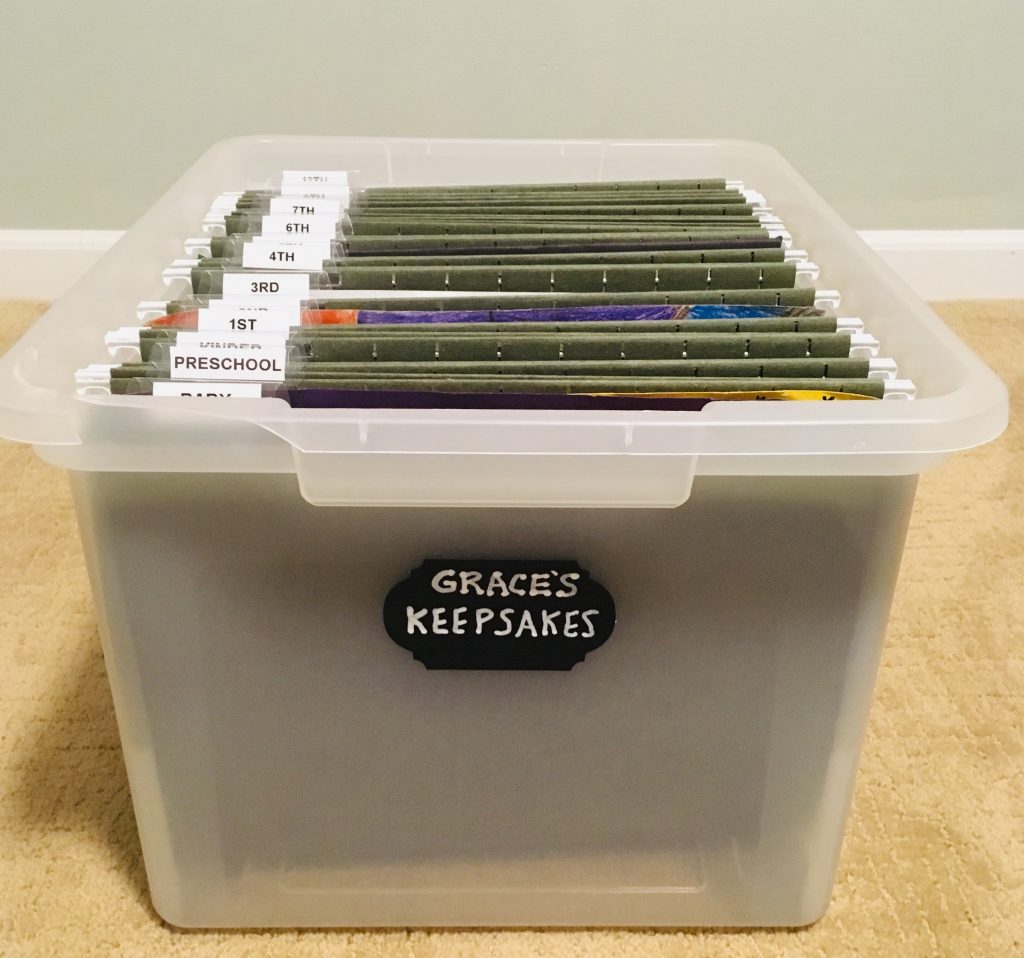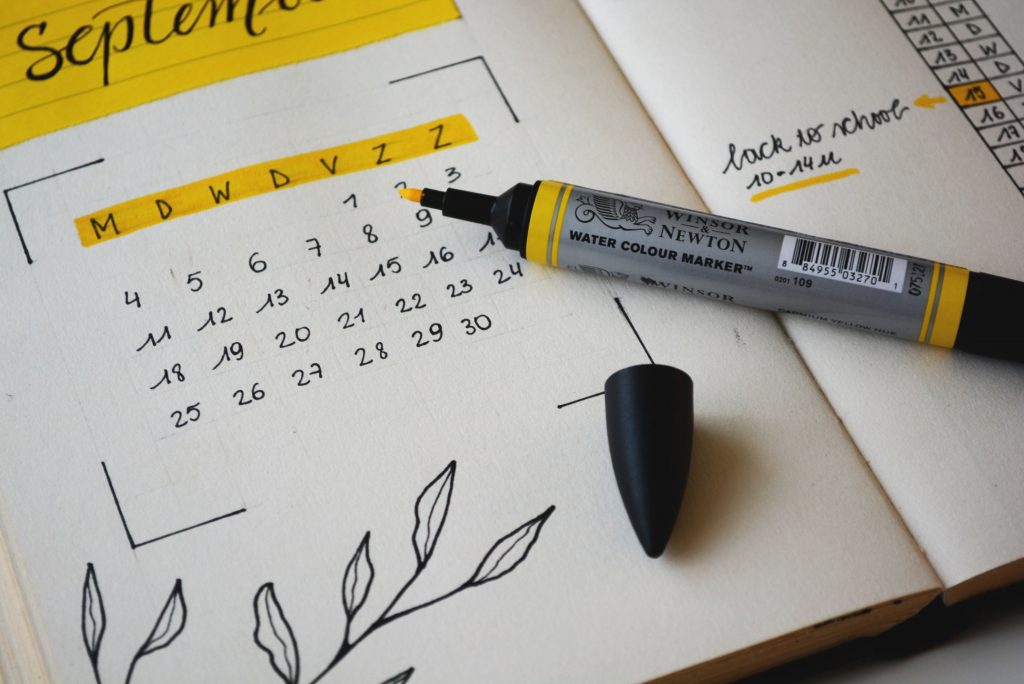*Disclosure: The amazon links included in this post are affiliate links. This means that, at no additional cost to you, I will earn a small commission if you click through and make a purchase.
It’s back to school time! Here in the Midwest the air is getting crisp and the leaves will soon change colors. Along with nature’s metamorphosis, our schedules and routines find new rhythms as well. Here are 5 tips and proactive strategies to help you not only survive but thrive during this time of back to school transition!
1. Control School Paperwork
Anyone with preschool or elementary aged kids, in particular, knows what I mean when I say there are just sooooo many papers! But, you CAN stay on top of it! It’s all about having systems that prevent the paperwork volume from getting out of control and help to ensure papers get to the right place at the right time.
- Artwork/Projects. Instead of letting these accumulate, ask your child to select their favorite piece to display on the fridge for a few days, then rotate it out and replace with something else. Acknowledge the work your child put into their masterpieces. Toss the rest or file it away. The photo below is a keepsake box we made for my daughter. My son has one as well. It’s simply a file folder box with a labeled pendaflex file for each year baby through 12th, 1 bin per child. Here are the *links: bins, files, chalkboard labels, and chalk pens. We have a separate container for the kids to put their selected work in throughout the year (when they want to keep everything). Then, by the end of the year, they’re typically ready to choose their favorites to be moved into their keepsake box.



- Papers that need to be returned to school. Have your child empty their backpack each afternoon, ideally right when they get home from school. Designate a place for your child to put any papers that you need to see (permission slips, homework to sign). Maybe it’s the kitchen counter or perhaps you prefer papers to be handed directly to you to handle right then. Whatever works for you and your family. Go through the paperwork by evening so your child can put everything in their backpack BEFORE the next morning. Mornings bring their own surprises and demands on our time, so the fewer things we need to remember at that point, the more likely our kiddos will arrive at school with what they need. Encourage your child’s growing independence and age appropriate accountability for having what they need in their backpack.
2. Prep Lunches
Before the start of each week, determine what days your kids will have hot vs. cold lunch.
- Cold Lunch:
- Choose a prep day. We like to take Sundays to make all the school lunches for the week. Sandwiches can be frozen (minus the lettuce, tomatoes, etc), then moved into a lunchbox the morning of the day they will be eaten. There may be other last minute adds, but you can get 90% of the way there before the rush of a school morning.
- Involve the kids. Even young kids can take an active role in packing their own lunch. Your kids are more than capable of assembling their own lunch. Really! You can set guidelines and pre-fill bins for them to choose from (ie pick 1 thing from the snack bin, 1 from the veggie bin, etc). Make it fun with a packing party. Turn on some music, put everything out on the counter and watch the kids enjoy making some of their own lunch choices. If you have a picky eater, you’ll find they’ll be more likely to eat their lunch if they played a role in the preparation.
- Hot Lunch:
- Sit down with your child to review the hot lunch menu for the upcoming week and to select what they would like to eat. Be sure you’ve deposited any needed funds into their account so you’ll be set for the week.
- Even if your child is having hot lunch, they may want to bring something from home for a school snack, so select it either as part of your morning routine or the previous evening’s routine.



3. Employ Routines
Morning, afternoon and evening routines are helpful not just for kids, but for the adults in their life, too! These systems (that eventually become habits) provide consistency, opportunities to develop responsibility, and good time management.
- Morning: Grab that already packed lunch:), add any other backpack items needed such as a jacket for a chilly morning. Try to allow enough time for your child to eat a decent breakfast, and not feel too rushed. Establish a short list of things for your young child to do each morning (get dressed, eat breakfast, make bed, brush teeth, etc). Make it fun with a chart or other visuals.
- Afternoon: Have your child unpack their backpack and grab a snack. Your child may need some time to unwind right after school, or they may be the type to jump right into their homework. Either way works. Take cues from your child as far as what seems to work the best for them.
- Evening: Prepare for the next day by setting out/packing any items needed for the next day. If the next day is library day, have your child put the books in their backpack. We’ve finally learned our lesson after some frantic mornings trying to find lost books! Have a consistent bedtime routine that may include reading, snuggles, and lights out. This time can seem like anything BUT a peaceful time, I know! But a routine can help your child know what to expect and calm any back to school jitters. Sweet dreams!
4. Develop a Schedule Strategy
The day-to-day schedule for back to school likely looks very different from the slower pace of a summer schedule. Take the opportunity to get all family members aligned on what is happening when.
- Calendars: Find a central place to post schedules of extracurricular activities. The refrigerator is a nice spot for this. Consider a master family calendar that has everyone’s activities in one place. That way, it’s easy to spot any schedule overlaps or extra busy times.
- Communicate: Have a touch base with the whole family over the weekend to review the upcoming week’s schedule. Include discussion on how to divide and conquer a busy after school schedule. It’s also a great time to offer support to a family member who may have a challenging week ahead – a parent with a big meeting, or a child taking exams.



5. Connect
Every year, it seems that there is a new school app or way to communicate with your school or teacher. It’s a lot to keep up with! It will pay off down the road to take some time to wrap your head around it. Download the app and follow the school page on Facebook or Instagram. Ensure all caregivers do this so that everyone is getting the same information. You do not need to be the sole keeper of all the happenings! Also, develop a list of resources, including carpool opportunities or backup before or after school childcare providers. This will be a handy resource that you can reach out to in a pinch.

